For a start my intention is to make a simple webpage with a couple of virtual buttons to control PWM signal. My board is STM32F429I-DISCOVERY with STM32F429ZIT6 microcontroller and 320x240 color touchscreen LCD. Currently I'm running on MBED platform.
First what I tried is to find any ready-to-use solution like "mbed web browser" or "stm32 web browser", as I thought that it is the right thing to display a web page. However - nothing useful found. Why am I stuck to web-page as a human-machine interface? I think that web-page is scalable so despite the fact that my project can be solved with a couple of drawn rectangles I'd like to try something beter and flexible.
Questions:
- Is it ever possible to display a web-page on a such weak device as my board is?
- How about Javascript? I think that it would be the only way to interface between the web-page and the hardware. Or there is another way?
- What can you recomend to search or use for my case?
Thank you in advance!
